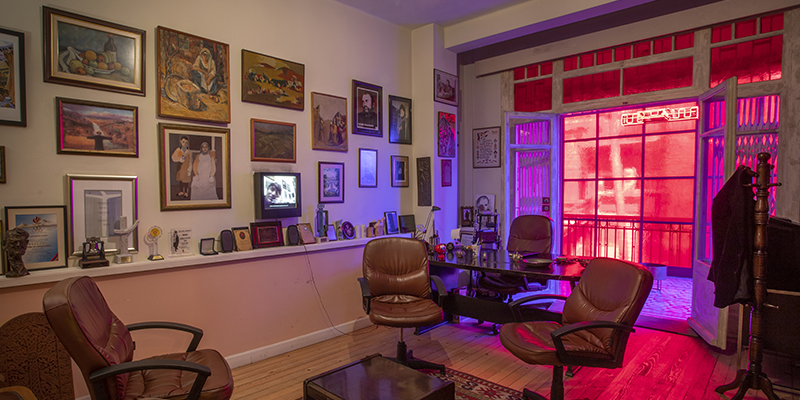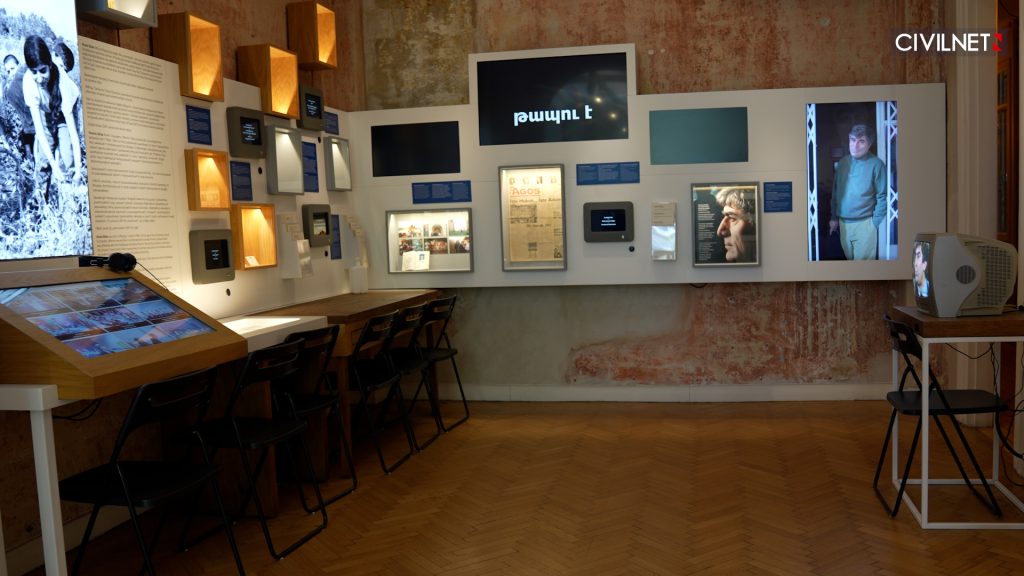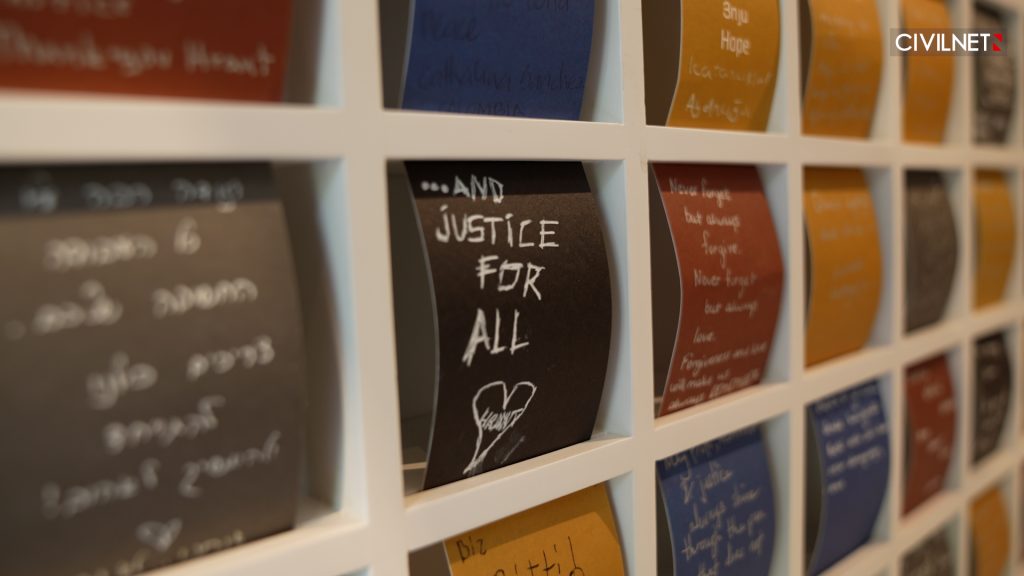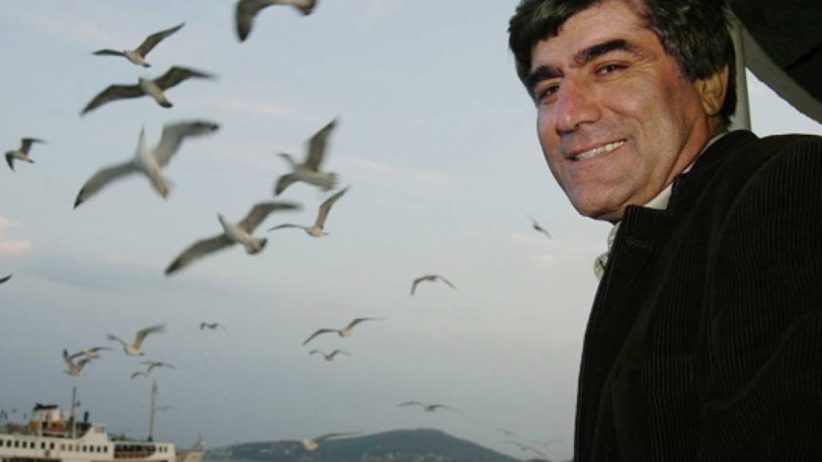by Paul Vartan Sookiasian
A decade and a half after his assassination, Hrant Dink, his name and memory, remain the symbol of hope for improved Armenian-Turkish relations within Turkey and beyond. Dink, who was the founder of the Agos newspaper, in front of whose offices he was assassinated, was also the co-founder of the Aras Publishing House and various other cultural undertakings aimed at improving dialogue and understanding within Turkish society and with its Armenian minority.
Hrant Dink was assassinated seventeen years ago on January 19, 2007. In his memory and to continue the spirit of his work, his family and friends established the Hrant Dink Foundation which has flourished as a unique center that advocates understanding and tolerance in Turkish society, for all peoples and minorities.

The exhibit of Hrant Dink’s office at 23.5 Hrant Dink Site of Memory
Among their programs is the annual commemoration of Hrant Dink’s assassination on the January 19 anniversary. This year, the public is invited to come to the site of the assassination, in front of what used to be Agos offices, and now home to the 23.5 Hrant Dink Memory Site. This commemoration will take place for the first time since the 17-year-old gunman who shot Dink was freed from prison, after serving a mere 16 years of a 22 year term. The attorneys, friends and interested public continue to delve into those who were responsible for inducing the gunman to commit the murder, including those in government.

The Foundation has also encapsulated Dink’s passion which led to his assassination by promoting the 2022 documentary “Memory Too Low for Words”, produced by his friend Ümit Kivanç. The hour-long film brings together archival footage of Dink in various interviews speaking on his philosophy, values, and dreams for a better Turkey.
The Foundation has taken on the responsibility to highlight the issues and concerns that defined Hrant Dink’s life, In the process, they have kept Hrant Dink and his memory alive.

Photo: Agos archive
The Foundation’’s work is unique and inclusive. Special projects like the KarDes app provide memory tours of Istanbul, Izmir, and Ankara to bring alive the urban and social memory of various minorities, now almost extinct. Users are directed along routes that reveal the traces of the cities’ multicultural past, utilizing historic photos and oral history accounts to bring them to life. Thousands of structures are noted in the app, including churches, mosques, cemeteries, schools, and theaters, and tours can be filtered based on theme and neighborhood.
The foundation hosts groundbreaking conferences with aims of writing history beyond the official discourse. In November 2023, “Minority Rights in the Centennial of the Republic” focused on the problems ethnic, religious and linguistic minorities face in Turkey, and 2022’s “Istanbul 1914-1922: War, Collapse, Occupation, and the History of Resistance” considered the social and economic transformation of this period while looking at the situation of orphans and immigrants.

A panel discussion organized by the Hrant Dink Foundation
Some proposed conferences have met with resistance, or outright rejection by the Turkish government. In 2019, a conference about the cultural heritage of Gesaria / Kayseri was to be held in Kayseri, but was denied permission by the government. The Foundation moved the conference to Istanbul, where it was first allowed, then, at the last minute, denied again. The Foundation was not ready to give up and instead organized a celebration of Kayseri’s famous manti culture. Dozens of people of various backgrounds and ethnicities gathered together at the Foundation headquarters and made manti together – speaking, sharing, singing and remembering.
Courses in the endangered Western Armenian language are also offered by the foundation, online, in collaboration with the Calouste Gulbenkian Foundation.
Dink was born in the city of Malatya in Turkey, but within a few years his family migrated to Istanbul as did most of the remaining Armenian communities in the Turkish interior. The Armenians who remained in their ancestral villages and towns were deeply isolated, as they were not able to have operating schools or churches, nor were able to have much contact with the Armenian institutions in Istanbul. Pressure from neighbors at home and from national events like the pogroms of September 1955 made their remaining in the interior even more precarious, with Istanbul’s Armenian community the only place left with relative security and support. Of course, the city’s economic promise was also hard to resist for many of Turkey’s citizens.

An exhibit at the 23.5 Hrant Dink Site of Memory
When Dink’s parents separated, he was placed in Gedikpaşa Armenian Orphanage, and his summers spent at Tuzla Armenian Children’s Camp played a major role in shaping his identity. After university, Dink was active in Turkey’s civil society efforts towards Turkey’s democratization. At the same time, with friends, he founded the Agos newspaper with the goals of combating discrimination against Armenians and their place in Turkish society, and at the same time, bridging the divide within Istanbul’s Armenian community between Armenian and Turkish speakers.
He used his platform to be an outspoken advocate for the rights and equality of all people in Turkey, the normalization of relations between Armenia and Turkey, and a proper recognition of their history. He came to even greater prominence when he was repeatedly charged with “denigrating Turkishness” under the notorious Article 301 of the Turkish Penal Code, including just months before his assassination for using the word genocide to describe the extermination of Armenians in 1915.

Interactive exhibit at the 23.5 Hrant Dink Site of Memory
Dink’s assassination on January 19, 2007, triggered unprecedented attention to his causes in Turkey, with his funeral procession garnering over 200,000 marchers of diverse ethnicities holding signs with slogans such as “We Are All Armenians”. The Hrant Dink Foundation was set up shortly after to carry on his legacy, and his newspaper Agos continues publishing to this day.
The Foundation invests a great deal of resources in bridge building between Armenia and Turkey. Its Turkey-Armenia travel grant increases direct contacts between individuals of each country by supporting them to visit the other one for projects. Hrant Dink Foundation programs are also shared in Armenia. An example is the 23.5 memory site in Istanbul which details Dink’s life, how his Agos Newspaper broke taboos in Turkey, and the aftermath of his assassination, all in the context of his values of equality, justice, and human rights. A virtual tour of the exhibition is available in Turkish, Armenian, and English, and a version of it was also presented physically in Yerevan in 2022 as “Hrant Dink: Here and Now”. The museum received the 2023 Kenneth Hudson Award for Institutional Courage and Professional Integrity at the European Museum of the Year Awards.

Visitors to the 23.5 Hrant Dink Site of Memory leave their impressions and sentiments
As the years pass on from Hrant Dink’s murder, the Foundation’s work only expands. From research on hate speech in media, to developing a reliable base for those interested in understanding Armenians’ place in Ottoman and Turkish history, the Hrant Dink Foundation is a unique and worthy memorial to Hrant Dink himself.
Also read:
















